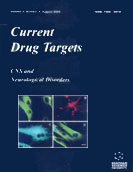Abstract
Angiotensin II was initially described as a hormone of peripheral origin, the active end product of the Renin-Angiotensin System. The subsequent discovery that Angiotensin II was locally formed and selectively regulated in most organs indicated that tissue Angiotensin II systems might play additional important roles. After initial controversy, the presence of an Angiotensin II system in the brain is now universally accepted. Brain Angiotensin II is probably involved in the regulation of many brain functions. Angiotensin II AT1 receptors are localized not only in areas related to the regulation of autonomic and endocrine control, but also in many other areas of the brain involved in emotional, sensory and motor functions. Angiotensin II AT2 receptors are more abundant in brain areas related to sensory and motor control. The roles of brain Angiotensin II appear to be multiple and complex. In addition to a regulatory role in the control of the autonomic and hormone systems, the peptide participates in brain development, sensory processes, cognition and in the regulation of cerebrovascular flow. Recent developments indicate that blockade of the brain Angiotensin II AT1 receptors not only contributes to a significant blood pressure decrease in hypertension, but that simultaneous antagonism of peripheral and brain AT1 receptors reduces the sympathoadrenal and hormonal responses to stress and prevents stress-induced gastric injury. A novel role emerges for the use of peripheral and centrally acting AT1 receptor antagonists as therapeutically advantageous for the treatment of stress-related disorders.
Keywords: Angiotensin, sympathoadrenal, cerebrovascular
 2
2

















